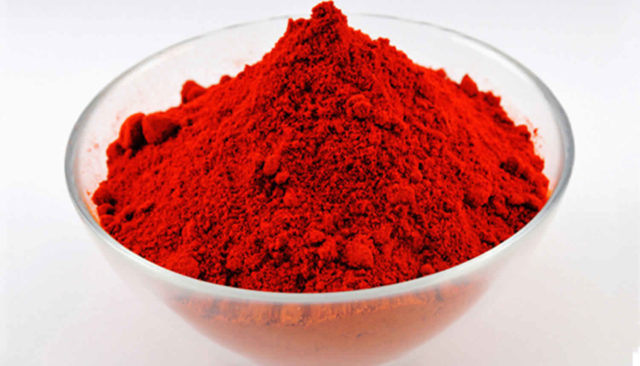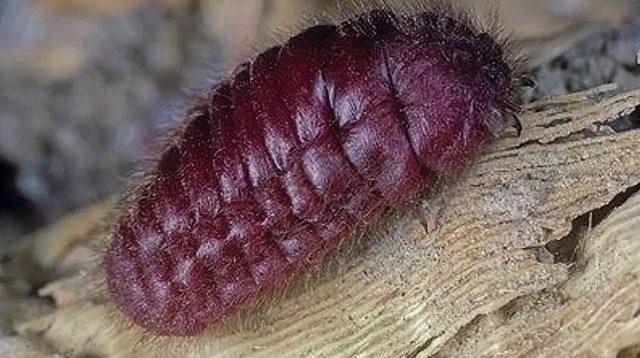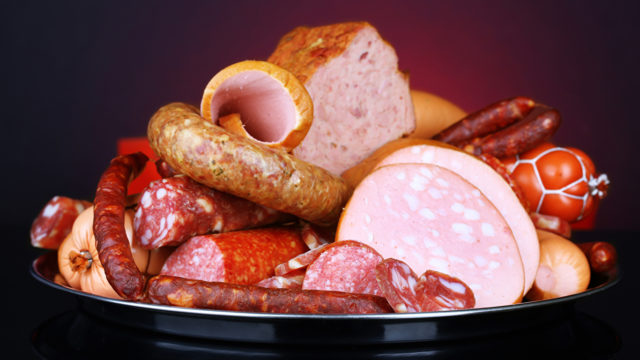Content
Food additive E120 is a purple-red dye with a thousand-year history. Since ancient times, it has been used for dyeing fibers in the manufacture of carpets, cloth, clothing. The great masters of the past painted pictures on its basis. The dye was registered as a food additive in the 90s of the XX century, at the same time its production on an industrial scale began.

What is E120 food supplement
Ready-made dairy or confectionery products delighting with their pleasant red color do not always contain natural strawberries, raspberries, pomegranates or cherries.
Very often, instead of berries or fruits, the food additive E120 is added to the products - a red powder of natural origin. Currently, Peru is the leader in production, supplying more than 85% of the dye to the world markets. The country exports about 600 tons of carmine annually. In addition, the E120 additive is produced by the Canary Islands, Algeria, Spain and the countries of South America.
What is carmine E120 made of
Food supplement E120 is made from cochineal. These are small insects that live on Mexican prickly pear cacti. Scabbards, or cochineal aphids, are pests up to 0.5 cm in size, which stick to the plant with their proboscis and feed on its juices.
To obtain the dye, only females are used at the stage of egg maturation, when they acquire a characteristic red color. With the help of special scrapers, the females are collected from the plants and then dried. The resulting mass is ground into powder and treated with solutions of ammonia or sodium carbonate. The composition is filtered, receiving the additive directly. It is produced in the form of a powder or solution, which is called cochineal.

The benefits and harms of dye carmine E120
The effect of the food additive E120 on the body has been comprehensively studied by scientists. It has been proven that carmine does not bring any harm or benefit. That is why its use in the food and cosmetic industry is allowed in a number of countries.

E120 food additive is dangerous or not
Since the end of the 20th century, E120 has been recognized as a safe supplement. It is approved for use in the food industry in many countries, including Russia, Europe, and the USA.In the regulatory documents, the additive is assigned a low hazard class, since it does not cause any negative reactions in the concentrations used. No toxic substances were found in its composition either.
However, cases of allergic reactions have been identified in people who ate products containing the E120 food additive. And so strong that anaphylactic shock began. Even with simple contact with the skin, for example, as part of lipstick or cosmetics, carmine can cause an allergic rash, hives, and swelling.

Where and why is food coloring E120 added?
For the modern industry, carmine has become a real panacea. Manufacturers prefer to purchase several kilograms of food additives than to import tons of berries. And in the textile industry and in the production of cosmetics, it is simply irreplaceable. Food coloring under the E120 index is used in the following areas of production:
- application of E120 in the food industry: in the production of sausages to give the gray minced meat a pleasant pink color; for the production of juices, ice cream, yoghurts, sweets, marmalade and sweet confectionery, including cakes and pastries;
- for dyeing artificial red caviar, crab sticks, smoked and salted fish; alcoholic and soft carbonated drinks, ketchups and meat, fish semi-finished products, some types of cheese;
- for the manufacture of cosmetics: lipstick, mascara, eye shadow, blush, various personal hygiene products with pink-red shades, including soaps, shampoos and creams;
- in the textile industry: for dyeing woolen yarn, woven fabrics, cloth;
- the manufacture of paints used for artistic purposes;
- in medicine, in the production of certain drugs.
Despite the high cost due to the complexity of manufacturing, most European and American manufacturers prefer to use the E120 additive. It is safer for humans than synthetic counterparts.

Conclusion
The food supplement E120 is of animal origin. It is obtained from the cochineal aphid that parasitizes one of the varieties of cacti. The bulk of the dye is produced in Peru, this country is the main supplier of carmine to the world market. The additive E120 is used in the food industry, to give pink-red hues to finished food products, for the production of textiles and yarn, in perfumery. According to research, carmine does not affect the human body in any way, so the food additive is approved for use in the Russian Federation and abroad. However, there are cases when carmine caused severe allergic reactions in the form of anaphylactic shock and a pronounced rash on the skin. Therefore, if the food additive E120 is present in the product, care should be taken.

